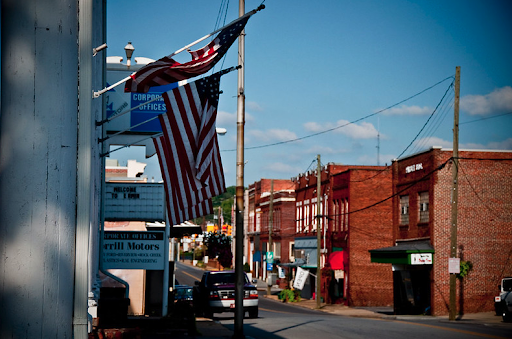Rural Americans need and deserve reliable and convenient transportation options, but current policies are failing them. Today we’re releasing six recommendations to help the administration make things right, combined with stories of success from rural America showing a better approach.

Time and time again, federal policymakers have operated under the assumption that living in a rural area inevitably means spending a lot of time driving long distances to accomplish daily needs—and that rural residents have great enthusiasm for this. But this belief is out of touch with the reality of rural life, where more than 1 million households don’t have access to a car, and for the most part, life is still arranged around small downtowns or town centers.
In addition, the folks who do drive are driving farther than they ever have before to accomplish the same things as yesterday—amounting to a great deal of cost, time, and inconvenience. New research from Transportation for America and Third Way released today finds that households in both rural and urban areas are driving significantly farther per trip as of 2017 than they were in 2001 to accomplish their commutes and daily tasks.
Yet households in lower-density suburban areas actually travel farther on average than households located near rural town centers. Our seven short stories in the back of this report show that many small towns are offering their residents the resources they need to achieve a high quality of life and travel conveniently and safely to jobs, school, stores, and more. Unfortunately, these towns’ efforts are undercut by federal policy that treats rural places as “drive-through” country, hollows out the most economically productive places in rural America, moves destinations farther apart, and consistently fails to prioritize rural needs.
A better approach: Six recommendations
Congress’s bipartisan infrastructure bill preserves many of these obstacles, but there are still plenty of opportunities ahead in how we implement that bill to make it easier for rural communities to revitalize their downtowns (bringing necessities together at one stop) and provide better transportation options. After this bill is finalized, federal decision-makers shouldn’t tune out for five years until the next big transportation bill, like they usually do—they should put in the work now to make this transportation policy work for rural communities.
1. Invest heavily in transit in rural America
Like every other part of the country, rural America includes residents who for a variety of reasons can’t drive, even if they have the financial means to access a reliable vehicle. Rural areas in particular have a higher share of their population aged 65 and over, who take fewer trips on average than their urban counterparts. Investing in transit can combat isolation and ensure that all people are able to access the resources they need. Rural transit is different too, and we need an approach tailored to their specific needs, rather than just a smaller “urban” transit program for rural areas.
2. Prioritize projects that improve access and reduce trip length
Good infrastructure should get people where they need to go, but our current approach focuses too heavily on speed as a proxy for success. Instead of incentivizing new projects that improve speed by default, it’s time to prioritize access—connecting more people to work, goods, and services in areas closer to where they live. You can be sure that some of the noted growth in trip length in rural areas is due to the consolidation or closure of destinations like hospitals, major employers, or the like.
3. Prioritize safety for everyone in developed areas like town centers
For rural areas, where town main streets often also function as state highways, current federal standards aren’t cutting it. Roadway design emphasizes speed and directly contributes to dangerous conditions for people walking or traveling without a car. As demonstrated by our case study of Hillsboro, VA, prioritizing safety over speed can make all the difference between a thriving economic hub and an abandoned downtown.
4. Prioritize maintaining rural highways over expanding them
Current policy incentivizes new highway investments that draw development away from small town centers, instead of prioritizing the repair of road and bridge connections that small town residents need. If a bridge in a rural county is closed due to lack of repairs, the detours can be incredibly inconvenient.
5. Connect rural areas by making a sizeable investment in better broadband access
We’re focused on transportation, but bad broadband access comes with significant transportation impacts, requiring long trips in some cases to accomplish work and activities that could otherwise be done online. While 97 percent of Americans in urban areas have access to high-speed fixed service, that number falls to 65 percent in rural areas, and barely 60 percent have access on Tribal lands, limiting economic opportunity and mobility.
6. Recalibrate federal agency policies and grant programs to better support rural town centers
Many rural communities depend heavily on grant programs from the US Department of Agriculture and other agencies to support their economic development, but a recent New York Times article highlighted how these grant programs can ultimately work to the detriment of small towns. These programs should be structured to encourage and incentivize investment in the historic town centers where their impacts are amplified.
In addition to these simple but powerful recommendations, we also profile a handful of communities that are attempting to do things differently, including stories from Paris, TX, Burlington, NC, Oxford, MS, Erwin, TN, and more.
The post It’s time for infrastructure that works for rural America appeared first on Transportation For America.











